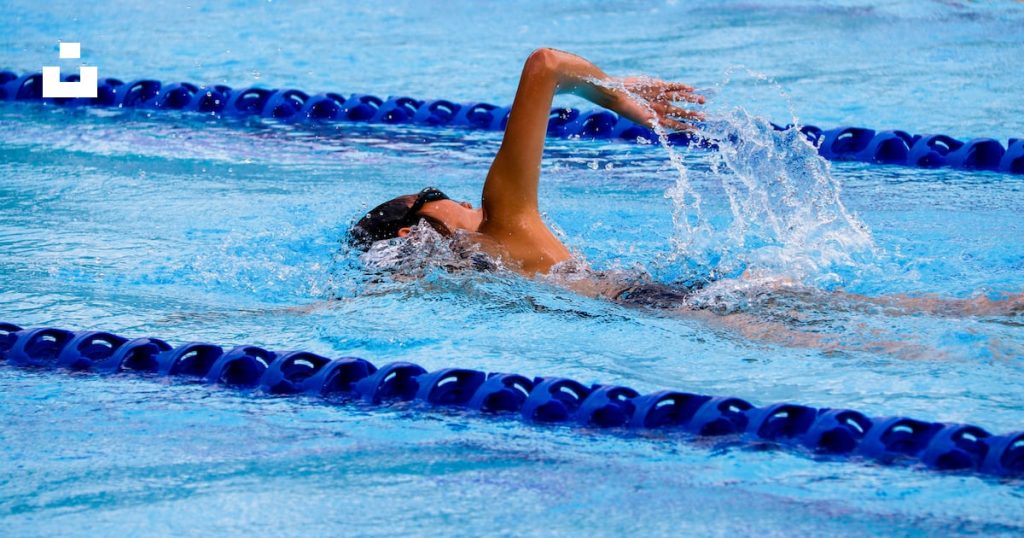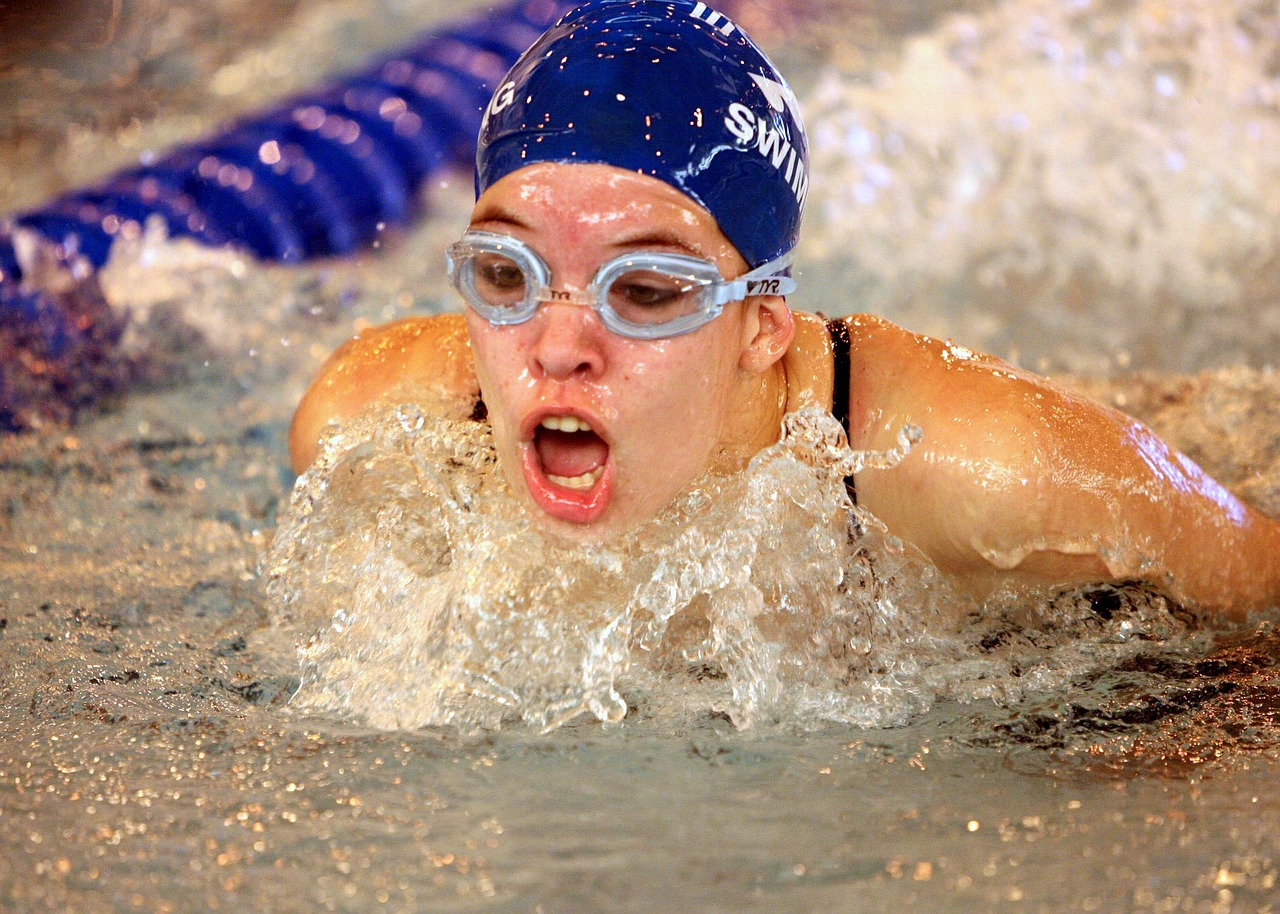Why Are Some Swimmers Faster Than Others?
Swimming is a sport that requires a combination of physical strength, technique, and mental focus.
While all swimmers aim to improve their speed in the water, it is a common observation that some swimmers seem to effortlessly swim through the water with incredible speed, while others struggle to keep up. This raises the question: Why are some swimmers faster than others?
In this article, we will explore the various factors that influence swimming speed and discuss how swimmers can improve their performance.
Advertisements
The Main Factor that Influence Swimming Speed
One of the primary factors that contribute to individual differences in swimming speed is genetics. Some swimmers may be naturally endowed with certain physical attributes that give them an advantage in the water.

For instance, longer limbs, larger lung capacity, and a higher proportion of fast-twitch muscle fibers can all contribute to enhanced swimming performance.
While genetics play a role, it is important to note that they are not the sole determinant of speed. With the right training and techniques, swimmers can overcome genetic limitations and improve their speed.
The Importance of Strength to Improve Speed when Swimming
Strength is a crucial factor in swimming speed. The ability to generate power and propel oneself through water is directly linked to strength.
Advertisements
Stronger muscles enable swimmers to exert more force with each stroke, leading to increased speed.
Strength training exercises, both in and out of the water, can help swimmers build the necessary muscle strength to enhance their performance. This may involve resistance training, such as weightlifting, as well as specific swimming drills that target the muscles used in swimming.
How to Improve Swimming Speed
1. Nutrition and Hydration for Improved Swimming Speed Performance
Proper nutrition and hydration are essential for swimmers looking to improve their speed. Fueling the body with the right nutrients and maintaining optimal hydration levels can significantly impact performance in the water.
A well-balanced diet rich in carbohydrates, lean proteins, and healthy fats provides the necessary energy for intense swim training sessions.

Additionally, staying hydrated before, during, and after swimming helps maintain muscle function and prevent fatigue.
Swimmers should consult with a sports nutritionist to develop a personalized nutrition plan that caters to their specific needs.
2. Mental Preparation for Improved Swimming Speed
Swimming is not just a physical sport; it also requires mental strength and focus. Mental preparation plays a crucial role in improving swimming speed.
Techniques such as visualization, positive self-talk, and goal-setting can help swimmers develop a winning mindset.
Building mental resilience and learning to manage pre-race nerves can make a significant difference in performance.
Incorporating mental exercises, such as meditation or mindfulness, into a swimmer’s training routine can enhance their ability to stay focused and perform at their best.
READ ALSO: How to set an alarm for 7:50 AM swimming class
3. Training Methods to Increase Swimming Speed
Specific training methods can be employed to increase swimming speed. Interval training, which involves alternating between high-intensity and low-intensity swimming, is an effective way to improve speed and endurance.
Incorporating drills that focus on technique, such as kicking drills or stroke-specific exercises, can also help swimmers refine their form and become more efficient in the water.
Additionally, cross-training activities like strength training, yoga, or Pilates can enhance overall fitness and complement swim training.
4. Techniques to Improve Swimming Speed
Mastering proper swimming techniques is crucial for improving speed.
Streamlining the body position, reducing drag, and maximizing propulsion with each stroke are key elements of efficient swimming.
Working with a qualified swim coach who can provide expert guidance and feedback is invaluable in refining technique.

Swimmers should focus on elements such as body rotation, arm entry, catch, and kick to optimize their performance.
Regular video analysis sessions can help identify areas for improvement and track progress over time.
5. Equipment and Technology for Faster Swimming
The right equipment and technology can give swimmers an edge in their quest for speed.
High-quality swimwear designed for competitive swimming reduces drag and enhances hydrodynamics.
Specialized swim caps and goggles that minimize water resistance also contribute to improved performance.
Additionally, the use of underwater cameras and motion analysis software allows swimmers to analyze their technique in detail and make necessary adjustments.
While equipment and technology can be beneficial, it is important to remember that they are supplementary to proper training and technique.
Case Studies: Examples of Fast Swimmers and Their Training Methods
To further understand the factors that contribute to swimming speed, let’s examine a few case studies of successful swimmers and their training methods:
Case Study 1: Michael Phelps
Michael Phelps, the most decorated Olympian of all time, is renowned for his exceptional swimming speed.
Phelps attributes his success to a combination of natural talent, rigorous training, and an unwavering commitment to his goals.
His training regimen included high-intensity interval training, strength training, and countless hours in the pool, focusing on technique and endurance.
Phelps also emphasized mental preparation, using visualization techniques to visualize success before each race.
His dedication to the sport and meticulous attention to every aspect of his training contributed to his unparalleled speed in the water.
READ ALSO: How to Get Started Swimming Again After a Long Break
Case Study 2: Katie Ledecky
Katie Ledecky, another swimming superstar, is known for her incredible speed and endurance in long-distance events.

Ledecky’s training routine includes a mix of high-volume swimming, strength training, and interval training. She focuses on maintaining a consistent stroke rate and optimizing her technique to minimize drag.
Ledecky also places great importance on mental preparation, setting clear goals, and visualizing successful race scenarios.
Her dedication, discipline, and attention to detail have propelled her to numerous world records and Olympic gold medals.
READ ALSO: All you need to know about Katie Ledecky
Conclusion
While some swimmers may have innate advantages in terms of genetics and natural abilities, speed in swimming is not solely determined by these factors.
Strength, proper nutrition, mental preparation, training methods, and technique all play crucial roles in improving swimming speed.
By implementing a holistic approach that addresses these factors, swimmers can enhance their performance and reach their full potential in the water.
Remember, swimming speed is not just about raw power; it’s about efficiency, technique, and the ability to harness one’s strengths.
So, whether you’re a competitive swimmer or a recreational enthusiast, focus on continuous improvement, and the speed will follow.
Subscribe to our newsletter if you want to read more answers to difficult sports questions.
Subscribe to our newsletter!
Stay informed and take your sporting knowledge to the next level!



